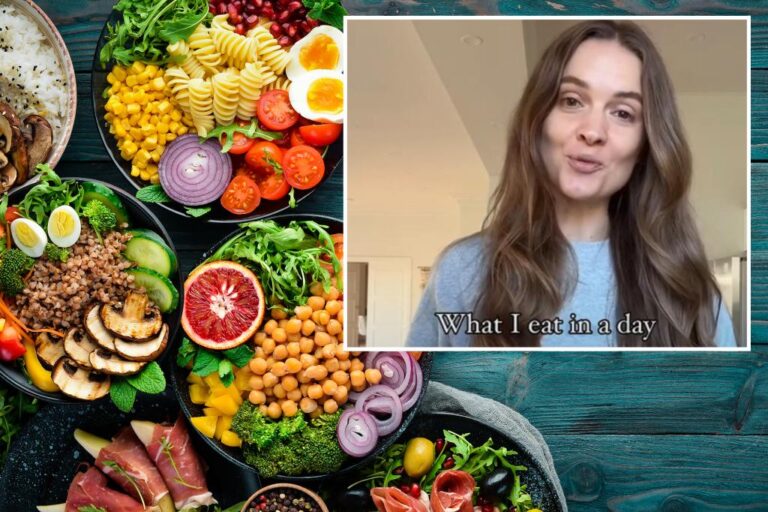Lifestyle
“I’m not going to talk about what I eat in a day.”
Australian influencer Laura Henshaw, 31, has officially called out the food sharing trend.
“It’s harmful. I’ve been struggling with poor eating habits for two years and I fell into the trap of consuming this kind of content,” she said.
Henshaw points out that even if we all eat the same thing, our bodies don’t all look the same, and that sharing has more to do with “body desire” than food inspiration. I realized that I was doing it.
Lately, there’s been a resurgence of influencers and celebrities sharing exactly what they ate in the past 24 hours.
Last year, Jackie O. Henderson, who has been open about her weight loss, made the wild confession that she ate small slices of red meat throughout the day.
“I grill a steak, slice it, and then when I’m hungry, I eat sliced steak,” she said on the KIIS radio show.

Similarly, Roxy Jacenko also shared her strict diet regimen on Instagram after losing weight. Dinner consists of broccoli and powdered vitamins, and breakfast consists of coffee.
TikTok has thousands of videos of young women sharing what they eat in a day, some of which have racked up millions of views.
The content is a little different, but the format is women wearing activewear sharing their daily eating habits.
Sometimes people frame their eating habits by disclosing that they do this to maintain a calorie-deficit diet, and sometimes the creator claims that their eating habits are helping them lose weight or manage a chronic disease. There is also.
Even if the creator doesn’t mention their weight, the comments section of the video is filled with women looking for tips on how to lose weight or asking the creator questions like “Are you counting calories?” It’s full of.

On the surface, it may seem like an everyday trend of young women documenting their lives, but it’s actually a new, trendy version of watching weight loss commercials.
It’s just a diet culture practiced by Generation Z.
True, the method may be slightly different. They replaced magazines with video blogs, but the result is the same.
Melissa Wilton, head of communications at the Butterfly Foundation, a national charity for people suffering from eating disorders, said these types of posts can have a negative impact on body image.
“We know that even if we all eat and exercise the same way, we can all look very different,” she told news.com.au.
“These posts invite comparison, which can lead to feelings of guilt or shame if your intake doesn’t match up. This is because diet culture encourages us to reach unattainable standards of beauty and appearance. It’s a sneaky way of telling us to do “better.” ”
Psychologist Carly Dover said sharing or creating this kind of content is “unhelpful.”
“This content can lead to increased urges to diet, withhold foods or food groups, exercise too much, overeat or purge, or engage in various forms of unhealthy eating behaviors,” she said. Ta.
Dover also noted that these trends can lead to false beliefs about which foods are good or bad for you.
“These trends also impose unhelpful ideas about what people should and shouldn’t eat, and may be harmful to people who are from a lower socio-economic class or from a different culture. It leaves people behind,” she said.
“We don’t want to participate in diet culture. Unfortunately, these videos perpetuate that.”
Load more…
{{#isDisplay}}
{{/isDisplay}}{{#isAniviewVideo}}
{{/isAniviewVideo}}{{#isSRVideo}}
{{/isSR video}}

